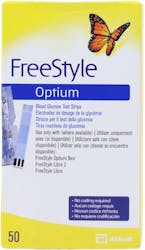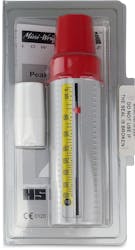Fingertip Pulse Oximeter Measuring Spo2 & Pulse Rate
Fingertip Pulse Oximeter Measuring Spo2 & Pulse Rate
What 500,000+ customers say about medino:
Get notified when back in stock
Description
A pulse oximeter determines the percentage of saturation oxygen saturation in the blood SpO2 and the heart rate pulse frequency.
What is pulse oximetry?
Oxygen is carried around in your red blood cells by a molecule called haemoglobin. Pulse oximetry measures how much oxygen the haemoglobin in your blood is carrying. This is called the oxygen saturation and is a percentage (scored out of 100). It’s a simple, painless test that uses a sensor placed on your fingertip or earlobe.
What’s pulse oximetry used for?
People with a lung condition may have a blood oxygen level lower than normal, so pulse oximetry can help to diagnose if there is a problem.
The more the lungs are damaged, the more likely there is to be a problem with oxygen uptake. Pulse oximetry can also be used to measure to how badly a person’s lungs are affected.
The test can be done as a one-off spot measurement.
It can also be used to measure your oxygen levels over a period of time, for example during exercise like walking – or when you are asleep.
How can I prepare for a pulse oximetry test?
Nail varnish or false nails can block the light and affect the reading. So you’ll be asked to remove it on one finger only. This will help get an accurate result.
Pulse oximetry results can be affected by medical conditions including anaemia and Raynaud’s syndrome. Talk to your health care professional if you’re concerned about this.
What will the results look like?
The oximeter display shows the percentage of oxygen in your blood. For someone who’s healthy, the normal blood oxygen saturation level will be around 95–100%.
If the oxygen level is below this, it can be an indicator that there is a lung problem. People with low oxygen level may need additional oxygen or other treatment. Your health care professional will discuss this with you.
Current guidelines recommend that people with a resting stable oxygen saturation of 92% or less should be referred for a blood gas assessment to see if oxygen therapy is appropriate.
Usage and Instructions
Simply insert a finger (of preference index) into the pulse oximeter.
Press the button to activate the device.
Nail varnish or false nails can block the light and affect the reading. So you’ll be asked to remove it on one finger only. This will help get an accurate result.
Pulse oximetry results can be affected by medical conditions including anaemia and Raynaud’s syndrome. Talk to your health care professional if you’re concerned about this.
Warnings
Nail varnish or false nails can block the light and affect the reading. So you’ll be asked to remove it on one finger only. This will help get an accurate result.
Pulse oximetry results can be affected by medical conditions including anaemia and Raynaud’s syndrome. Talk to your health care professional if you’re concerned about this.






